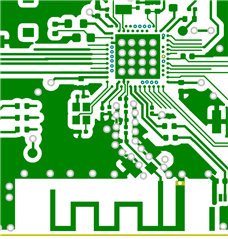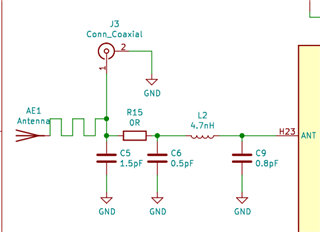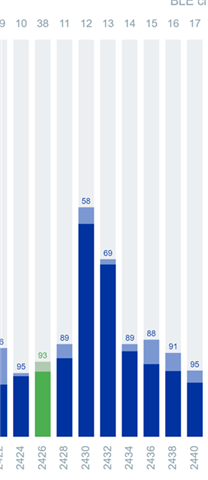Hi
I was using the MESH SDK 5.0.0 Dimming Server Example on nRF52840 DK and Dongle it worked fine so i designed a custom Board according the Designrules of Nordic.
Setting:
PCB is a 4 Layer 1.6mm, both Cristal where mounted (same Types as on the DK Board)

(Backside)
Antenna is an Inverted F Type

Antenna path
Programmig and powerdelivery is made over the nRF52840dk OS: Win10 with nrf Connect Toolchain
Faliture:
Device is not transmitting any Bluetooth beacons, App Timer is Running as expected.
RTT is printing no Error ->similar to DK (with different UUID).
Outputs react as expected.
I had checked the following Points:
- Erased the Chip with nrfjprog --recover --Family NRF52 --Log
- HFXTAL on Register 0x4000040C is 00010001 -> 32Mhz Cristal is Up and Working
- LFXTAL on Register 0x40000418 is 00010001 ->32Khz Cristal is Up and Working
- Powersupply external 3.3VDC -> No change
- I tried the same Steps on a second (similar) Board with the same behaviour.
Question:
What could i investigating to resolve the issue.




